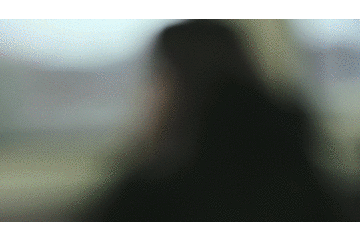This created a rushed, unstable, anxious and drunken image. In these scenes we used faster cuts and sped up some footage to 500% to further heighten the pace of the scene.
We shot on a Canon EOS 70D and
550D, giving us good depth of field and low noise during the night scenes. We
used an 11-16mm f2.8, a 50mm f1.4 and a 58mm f2 lens. The former gave us
distorted wide angles and the ability to zoom, and the later 2 allowing for narrow depth of field and lens whacking. We created and applied a digital
filter to resemble the bleach bypass effect, used on films such as Seven (1995, David Fincher).
As Natalie was acting in the film, I did most of the camerawork, but we both planned, filmed and edited together. Because we used a very loose narrative structure, the film was quite confusing and didn’t seem to flow too well. The range of camerawork styles and locations also made the overall aesthetic quite inconsistent. If I were to film it again, I would make the colour scheme and camerawork more consistent to give the film a clearer aesthetic.
The film taught me a lot about filming in busy public locations;
we had to acquire permission to film at the train station and not use lighting,
tripods higher than 6ft or film 3-4ft from the platform edge, which thankfully
didn’t effect our film.
We took inspiration from Amélie
(2001, Jean-Pierre Jeanet) in how it characterizes the protagonist Amélie
Poulain, however we gave our film a much darker, grimmer aesthetic. We were
also inspired by Fish Tank (2009,
Andrea Arnold) in it’s use of colour and camerawork.



I was also inspired by the short films Salaryman 6 (Jake Knight, 2002) and Beat (2013, Aneil Karia) and how they conveyed the protagonist (with little or no dialogue from them) as a social outcast and potentially struggling with their mental health, and how they portrayed the urban environment visually.



I was also inspired by the short films Salaryman 6 (Jake Knight, 2002) and Beat (2013, Aneil Karia) and how they conveyed the protagonist (with little or no dialogue from them) as a social outcast and potentially struggling with their mental health, and how they portrayed the urban environment visually.







